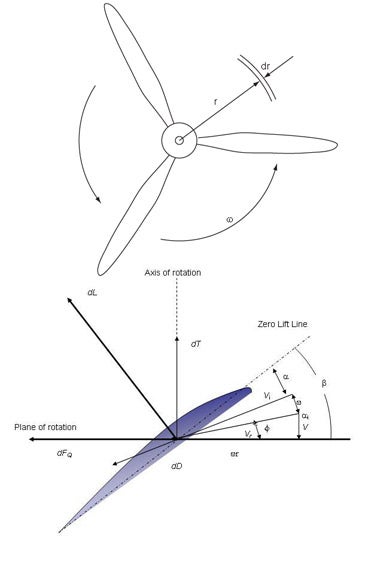VII. Production of Thrust with a Propeller
A.  Overview of propeller performance
Each propeller blade is a rotating airfoil which produces lift and drag, and because of a (complex helical) trailing vortex system has an induced upwash and an induced downwash.
Â
Â

Figure 7.1 Adapted from McCormick, 1979.
Â
The two quantities of interest are the thrust (T) and the torque (Q). We can write expressions for these for a small radial element (dr) on one of the blades:
           ![]()
           ![]()
where
           ![]()     Â
and     Â
    Â
and      ![]()
It is possible to integrate the relationships as a function of r with the appropriate lift and drag coefficients for the local airfoil shape, but determining the induced upwash (ai) is difficult because of the complex helical nature of the trailing vortex system. In order to learn about the details of propeller design, it is necessary to do this. However, for our purposes, we can learn a about the overall performance features using the integral momentum theorem, some further approximations called “actuator disk theoryâ€